Content
Asia has a whole galaxy of dark-skinned chickens with varying levels of melanin. One of these breeds is Xin-xin-dian meat and egg chickens. Their skins are dark gray rather than black. But the eggs are exotic.
This breed is, in fact, a marriage of selection. In fact, the Chinese at that time wanted to breed a new breed of fighting roosters, but it turned out Xin-hsin-dian. True, then it was not called that. The chicken resulting from an unsuccessful attempt to breed a fighting breed could be attributed to meat and egg direction. But the Chinese have no compromise. The animal they breed should bring maximum production.
If a angora rabbit, then a fur ball, in which the rabbit itself is not visible. If a meaty silky chicken, then a rooster less than 5 kilograms is not a chicken. There were enough meat breeds of chickens in China, and there was nothing to make "hundred-year-old eggs". And it was decided to convert this "neither fish, nor meat" to the egg business.
As a result of the selection work of Shanghai scientists, a virtually new breed of chickens, Xin-hsin-dian, was born. She got to Russia through Khabarovsk, thanks to the owner of the poultry farm N. Roshchin.
Description
According to the photo and description, the Hsin-hsin-dian chickens are no different from ordinary laying hens. Only black birds stand out. If you find representatives of the breed of red and red colors on the street, then it will hardly be possible to distinguish them from ordinary layers. The differences become apparent when the eggs of these hens are collected or plucked.
The Xin-hsin-dian egg has a pleasant green color. And the breed itself is famous as "chickens that lay green eggs."
Standard
The Chinese are not particularly concerned about the description of the standard for the Xin-hsin-dian chicken breed, since the productivity of the bird is more important to them. But the Russian clubs of fans of Chinese chickens do not like this state of affairs, and they make their own standards for all breeds in order to streamline the breeding of purebred Chinese chickens. There is such a standard for Hsin-dian as well.
The blue blues have the typical appearance of the egg breed. Light body, low weight of birds, large combs of roosters. The head is medium in size with a large but neat foliate ridge. Even in chickens, the scallop is clearly visible. Earrings, lobes, face and crest are bright red. In chickens, the face may be gray, and the lobes are bluish. A distinctive feature of a good rooster is long earrings and a large comb. The eyes are orange-red. The bill is short with gray and light areas in red birds and dark gray in black ones.
The neck is of medium length. The small body is set almost horizontally. The skeleton is light, trapezoidal. The back is straight. The wings are tightly attached to the body, of medium size. The tails of both sexes are set high and fluffy. The upper line forms the letter U in both roosters and chickens. Roosters' braids are short, underdeveloped.
The chest is rounded. Layers' belly is well developed. The thighs and lower legs are small. Metatarsus are gray-yellow, unfeathered.
There are three color options in the breed:
- the black;
- redhead;
- red.
The black hens of the Xin-hsin-dian breed look most impressive in the photo.
You will have to hang a sign on the red hen that this is not just a purebred village laying hen, but a rare exotic breed.
Productivity
The Chinese hens Xin-hsin-dian have a small body weight: up to 2 kg for males, up to 1.5 kg for layers. Egg production is relatively low compared to commercial egg crosses. Pullets begin to hatch at 4-4.5 months and in the first year they lay up to 250 eggs with green shells. At the initial stage, the egg weighs 55 g.Later, the egg weight increases to 60 g.
Also, "old" chickens lay darker eggs than pullets, although the diet and conditions of the birds are the same for both groups.
It is completely unclear how to explain the difference in the color of eggs from young and old chickens. At the same time, the phenomenon when, at the beginning of oviposition, the color of the egg is more saturated, and towards the end turns pale, has long been known and is also found in chickens of the Ameraucana breed.
In Hsin-dian, the maximum productivity is observed in the second year of life. On the third, egg production decreases. Therefore, experts advise to renew the herd every three years.
But, as already mentioned, the Chinese do not care much about breed issues. They want productivity. Therefore, under the name Xin-hsin-dian, hybrids with another Chinese breed can be found. These crosses lay eggs with shells ranging from marsh to dark blue.
For egg production, crosses are more profitable, since the egg production is higher, and the egg itself is larger.
Dignity
The description says that the Hsin-hsin-dian chickens are very calm and highly disciplined. Apparently, a national Chinese trait. Compared to other similar breeds, they have a smaller stomach, which means they consume less feed. Hsin-dian are resistant to temperature extremes and are able to withstand slight frosts, although during the cold winter they should be transferred to a warmed chicken coop.
Eggs are prized for their unusual shell color and high lipid content that removes cholesterol from the body. However, the latter is just a marketing ploy.
The owners' reviews of the Hsin-hsin-dian chickens are enthusiastic. I am amazed not only by the peaceful behavior of the birds, but also by the quality of the meat. According to poultry farmers, even the meat of 1.5-year-old roosters is soft and delicate in taste. Normally, even the meat of a one-year-old bird already becomes very tough and is only suitable for broth.
Features of the breed
The owners of Hsin-dian noticed that with the onset of cold weather, laying hens sharply reduce productivity. But chicken owners associate this phenomenon not only with the air temperature, but also with the length of daylight hours. In winter, these factors are corrected by installing a heater and additional lighting in the hen house.
In a room with a floor area of 6–12 m² and a ceiling height of 2 m, only two 100-watt bulbs are enough. In the presence of modern energy-saving lamps, which shine much brighter than old incandescent lamps, they consume 5 times less electricity, it will not even be very expensive. Daylight hours for Hsin-dian should last 12-14 hours.
You won't be able to save money on heating. The room temperature must be at least 10 ° C. But also not higher than 20 ° C. The optimal temperature range for Blue-blue is 12-14 ° C when kept on the floor in a chicken coop and 15-18 ° C when kept in cages.
Content
Hsin-dian are very mobile and love to fly. For a comfortable stay, they need a closed aviary, where they can “stretch their paws”.
Although chickens are quite resistant to weather adversity, they do not like extreme cold and dampness. It is better to build a hen house for their residence immediately insulated and with good ventilation. In the absence of ventilation, condensation accumulating on the walls and ceiling will lead to mold contamination of the room. And droppings accumulating in the litter will kindly provide the mold with nutrients. As a result, the bird will develop aspergillosis.
Litter for chickens is arranged depending on the season. In summer, it makes no sense to make a deep litter, but by winter the thickness of the gradually poured litter should reach 35-40 cm. In spring, with the onset of warm days, the litter is raked out and the cycle begins anew.
The number of birds in the hen house per m² should not exceed 6 heads. The needs of the Sin-dian breed are high. Chickens prefer to sleep at a height.
Hsin-dian's diet is the same as that of other egg-laying breeds. They also need minerals and vitamins. To replenish the protein, which is spent a lot from the chicken's body in the production of eggs, it is necessary to periodically give the hens minced meat or fish.
Breeding
Considering the annual production of eggs, one can guess that the Xin-dian hens are not torn to be the little ones. Therefore, the chickens are hatched in incubators. The safety of chicks in this breed is very high: 95-98%.
The hatched chicks are fed in the same way as chicks of other breeds. The temperature in the brooder should be kept at 30 ° C for the first time. As feathering progresses, the temperature is slowly reduced to 20 ° C.
In the photo, the future black Hsin-dian. In childhood, the color of chickens is different from that of adult birds.
Testimonials
Conclusion
According to the description and photo, the Xin-hsin-dian breed of chickens is not particularly impressive. But those who ventured to start it quickly come to the conclusion that these chickens are almost ideal for a personal backyard: they eat little, rush well and do not fight at all. The latter is especially important in a private household, where the owner often cannot monitor the behavior of chickens 24 hours a day.
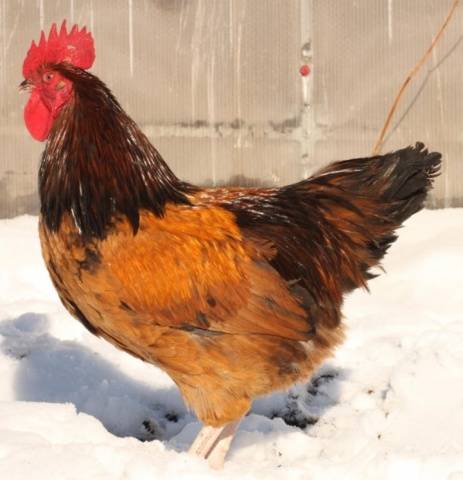
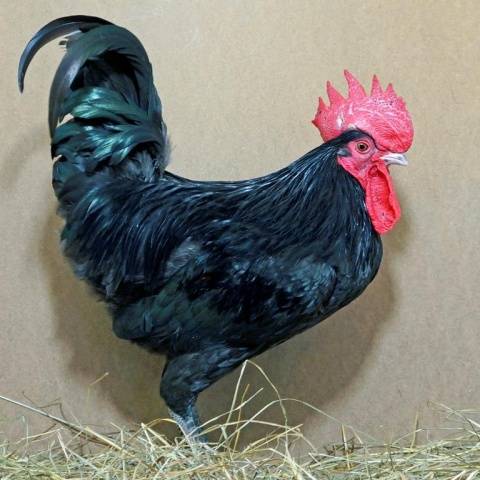
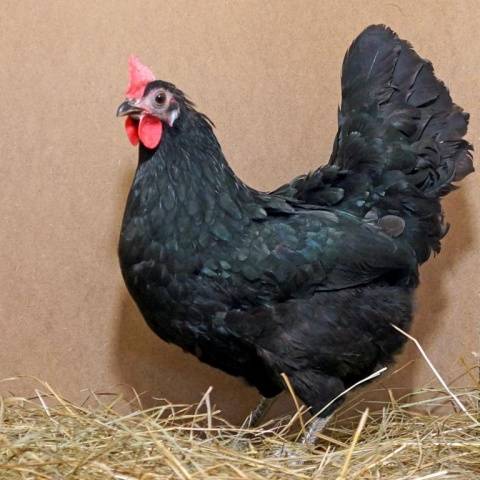
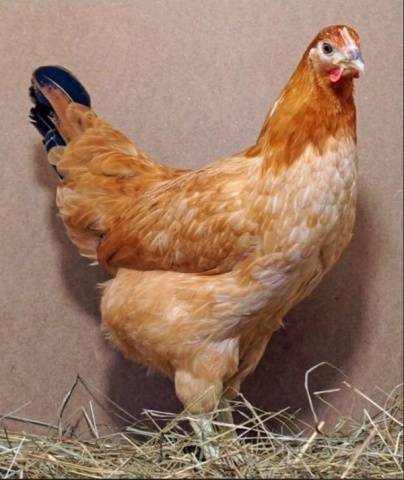


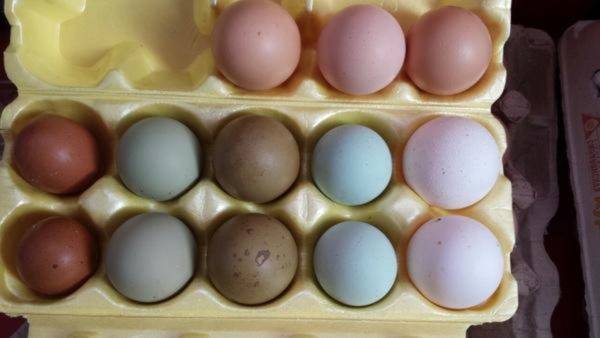
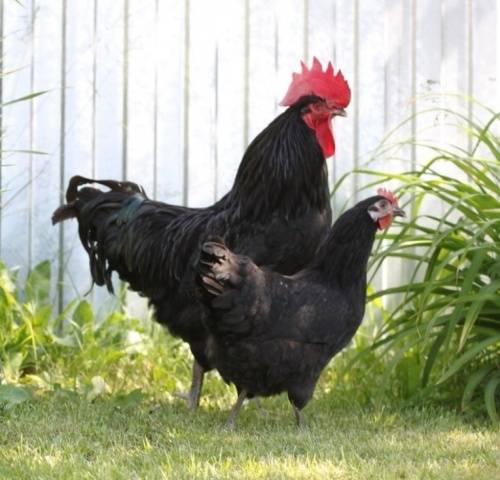

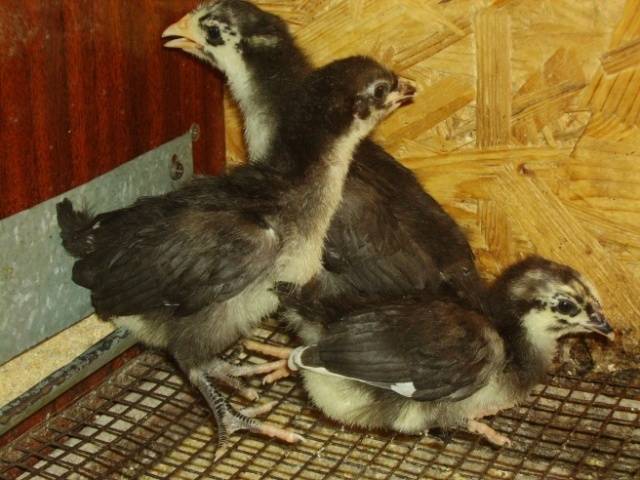









what is the difference between uhui ulyui and xin xin tribute is written in xin xin green eggs i read uhui ului is also green and what is the difference
Hello. Should the difference be between eggs or between chickens? Wuhei Yilu's eggs are smaller than those of Xin Xin Dian. If the question is about buying eggs for incubation, then one can only hope for the seller's honesty, since the difference between the eggs is not very big. In young Xin Xin Dian, the egg is only 6-7 grams higher than the weight of the egg of Wuhei Ilui. But this is in the descriptions. In reality, various weight variations are possible.
If we are talking about the difference in breeds, then Xin Xin Dian, an outside observer who does not delve into chicken breeds, can easily be confused with ordinary chickens. Unless a dozen or two black Xin Xin Dian will convince people that this is some kind of breed.
Ukhei Ilyui with Russian breeds definitely cannot be confused. It is much easier to confuse them with Ayum Tsemani, who do not run in every Russian village yet. Although Uhei's crest and earrings are not pure black like Tsemani's.
In terms of egg production, these breeds also differ. Xin Dian was created as an egg breed and lays between 250 and 300 eggs a year, while Wuhei Yilu barely makes up to 180 eggs a year.
But when buying a hatching egg, it is hardly worth fearing that instead of Xin Dian, you will be sold to Wuhei. On the contrary, it's easy. Uhei Ilui is a very rare breed. And it is not known which is more rare: Uhei or Tsemani.
thanks, but it seems like the color of the egg of the ears is different from the egg blue blue